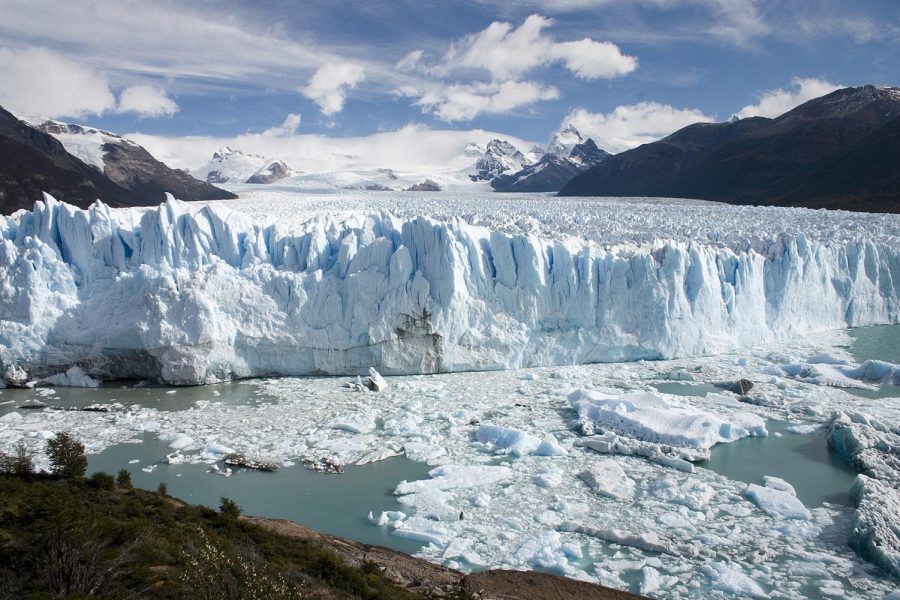Umar: We can turn the tide of climate change
I, Luca Galuzzi [CC BY-SA 2.5 (https://creativecommons.org/licenses/by-sa/2.5)]
While using reusable straws and cups may help, greater efforts will need to made to actually make a difference in our fight against climate change.
September 12, 2019
While vacationing in Florida, a teenage girl witnessed, first-hand, the effects of plastic pollution. Turtles washed up on the shore frequently with plastic straws up their noses and plastic bags lodged within their stomachs. She knew she wanted to make an impact and assist in the effort to save these sea creatures. She bought a metal straw and a reusable cup. Every time she saw a turtle after that, she knew that she saved them.
The climate crisis is getting scarier. In 2018 alone, carbon dioxide emissions reached their peak, and 2019 is set to tie with 2016 for being the hottest year on record. I cannot emphasize enough that we have what we need to at least begin to make a change.
While more permanent and new technologies are being manufactured, we have the tools already available to start enforcing effective measures to improve our situation. We currently have a good idea of what we need to accomplish. In fact, the amount of statistics and data available about this crisis is due to the emergence of technological advancements created in anticipation of this impending disaster. Our archive of knowledge relating to this issue has only expanded within the last century, and there is now a plethora of understanding towards this subject and how we can divert ourselves from the path we’re set on.
I believe that the impending environmental disaster is not improving due to a lack of will rather than a lack of options. With our knowledge and technological feats, we can develop solutions for major issues. For example, the US could reduce fossil fuel emissions by 80 percent within the next 15 years without significantly raising electricity costs. Furthermore, plans to address the continuing melting of glaciers have been made. One plan involves placing underwater walls made by robots around vulnerable glaciers susceptible to shedding more ice.
Not only are there theoretical possibilities that are realistic, but there have already been major improvements.
Hydrofluorocarbons (HCFC’s) and chlorofluorocarbons (CFC’s), used in air conditioners and refrigerators, were widely used and negatively impacted the Earth’s ozone layer. In 2004, the US banned the production or import of HCFC-141b for any purpose. It was this, along with 197 countries agreeing to stop using these components, that led to its eventual process towards healing. Currently, it is estimated that the ozone layer will completely close by the middle of the century if we continue to make progress.
Some people are skeptical about technology aiding us in this fight. They tend to think that real change can only be achieved through societal changes. This viewpoint does hold some validity.
While driving less and eating fewer animal products will be necessary, the climate won’t get better based on a few lifestyle choices. No matter how much impact they make, it won’t be enough. Technology is needed for change to occur. We can’t use coal to power our homes while being vegan.
The biggest fear is that we will become too hopeful and reliant on technology to save us. What people don’t realize is that technology is giving us the tools to save ourselves. Without knowledge about major threats and indicators, we would have no direction.
Technology has already given way to widespread efficient solutions that would not have been available without the amount of research we have done. Solar, wind and hydro-powered energy sources are becoming prominent throughout the world, especially in first-world countries.
Scotland has built the world’s largest floating wind farm, and the country received 98 percent of its electricity needs from wind power. Meanwhile, Germany produced enough renewable energy for a whole year during the first few months of 2018. In addition to this, we have created electric-powered cars that can reduce pollution and greenhouse gas emissions drastically, specifically the 8 million metric tons of carbon pollution produced by the U.S.
The automatic feelings of dread and panic when regarding this issue are not necessary. Consider the fact that climate change’s initial discovery and current understanding represent a feat in twenty and twenty-first-century scientific advancements. Not only that, but technology can now tell us specific details regarding the earth’s climate such as ocean temperature variances and the amount of ice currently melting off major glaciers.
Technology isn’t the only thing taking credit for our newfound and growing knowledge. Information surrounding endangered species is the result of decades of field observation and laboratory calculations done by scientists and researchers. In addition to this, all the tracking technology set up in remote ecosystems are the product of dangerous expeditions to areas with little to no civilization. These findings do not reflect an era that has not dedicated some effort into gaining an understanding of the current state of the climate.
This time period can already be defined by the amount of knowledge we have accumulated. The result of these technological advancements are meticulously crafted satellites, alternative energy sources and eco-designs all used to track, understand and decrease the effects of climate change. Building these technologies has already become a reality and implementing them is possible too.
The ability to change the environment is already within our grasp. The second we realize that it is up to us to demand that these resources are utilized on a mass scale is the point where a positive cycle will start. If we don’t act, we won’t be remembered as the generation who couldn’t find a solution, but rather as those who had everything we needed within our grasp and chose not to take the first step.
When that girl took her carbon emission producing flight back home with her new climate saving tools in hand, she felt fulfilled. From that day forward she proudly denied the assistance of any plastic drinking tools in fear for turtles’ safety. However, she overlooked the fact that plastic straws aren’t the only thing that turtles can ingest and that the climate battle doesn’t end with them. She didn’t think of that because she believed her contribution to the climate battle had been fulfilled by one simple transaction.










